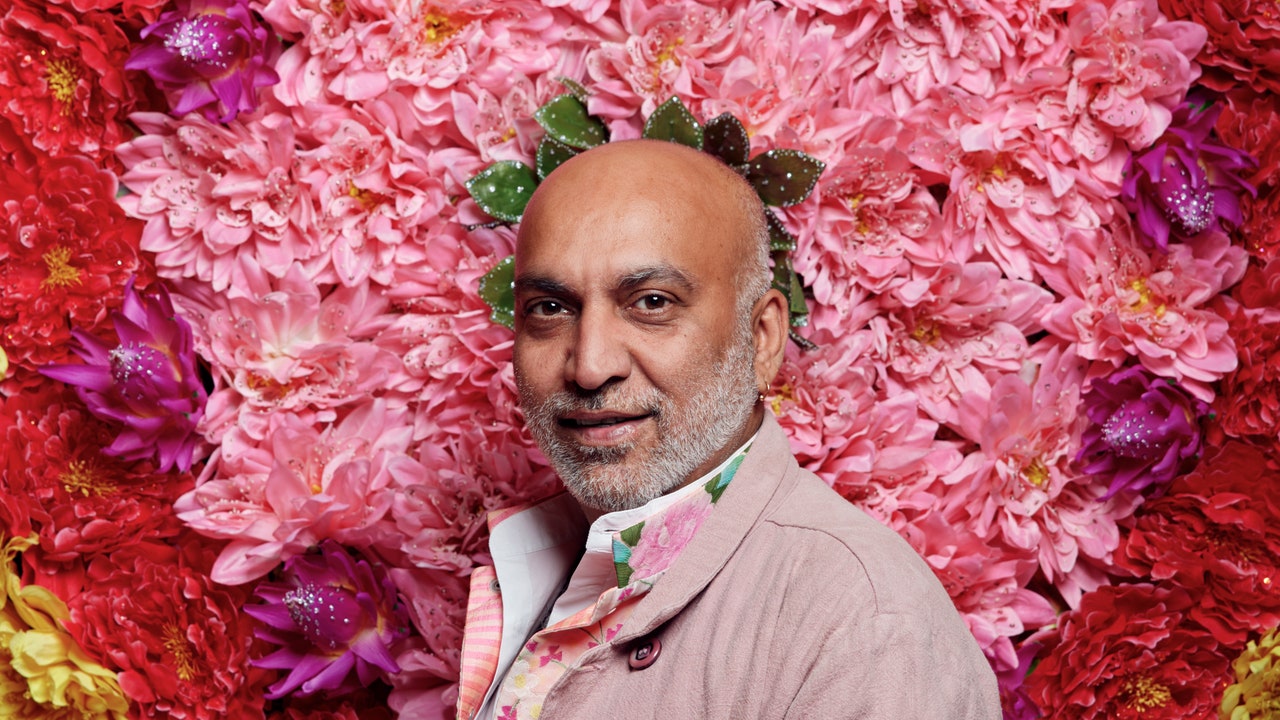One of Manish Arora’s most sentimental garments might surprise you. For all of the designer’s glittering more-is-more maximalist gowns, covered in baroque gilding and a paradise of handmade embellishments, there’s also a simple fuchsia button-down shirt. Stamped with small but powerful silver metallic flowers. It debuted in one of his first collections in the late 1990s and was owned by one of his late close friends, Catherine Levy, who always joked that she would one day give the shirt to a museum. And so her wish became reality during the exhibition Manish Arora: Life is beautiful Opened this week at the SCAD FASH Museum of Fashion + Film in Atlanta. It is the first major retrospective for the designer – and one of the few rare solo fashion exhibitions dedicated to an Indian fashion legend whose work, in his own words, “could only be designed by an Indian designer.”
Known for his iconic quotes like ‘pink and gold are my religion’, Arora has been creating wearable maximalist fantasies since the late 1990s. Think: colorfully textured pieces layered with references as far away as Burning Man to the trance dance parties of Goa. It’s over-the-top, decadent and opulent; it’s extra. From the early 2000s, Arora became one of the first major Indian designers to show at London Fashion Week and Paris Fashion Week, and in early 2010 she also had a brief stint as creative director of Paco Rabanne. His influence is widespread – he dresses the likes of Katy Perry, Lady Gaga, Nicki Minaj and more – and has been known for years as one of the most extreme and over-the-top designers in Paris.
Together with Rafael Gomes, director of fashion exhibitions at SCAD FASH, Arora has painstakingly reached out to his biggest collectors and clients over the years to secure pieces for the show. “It was nice to connect with people I haven’t talked to in 15 years,” says Arora Fashion. “A lot of people were really excited, a lot of people weren’t sure, but in the end I think we did really well.”
Colin Douglas Gray
Sitting in SCAD’s museum on a cool afternoon in Atlanta—his nails painted gold, his fingers studded with handfuls of shiny gold rings, his outfit slightly metallic and layered with tailoring—he explains that most of the pieces in the show are, in fact, one. -of a kind. “Some of these pieces I didn’t even have,” he says. “I didn’t collect my archives, so we got together and contacted people and got them. These pieces are like nothing you will ever find anywhere else. An example? A Paris-themed rainbow skirt featuring the Eiffel Tower, the Arc de Triomphe and the Moulin Rouge’s famous Can-Can dance in action. It’s hand-stitched, which takes hours and hours and hours of work, comparable to couture-level fashion. “It’s a typical Parisian cliché, but it’s one of my favorite pieces,” he says. “It was impossible to reproduce, so there is only one.”
Inside the exhibition, a feast for the eyes manifests itself in the form of various dream-like scenarios. There’s a dessert-themed wall, anchored by crystal-covered ice cream cones and cupcakes, and a fantasy section, flanked by images of pastel skies and floating fabric castles. The show is divided into 13 themes that best represent the designer’s oeuvre. There’s also a rare glimpse into his legendary jewelry, which plays with ideas of traditional ceremonial dress and whimsy (pineapples, gingerbread houses and unicorns galore). Archival and childhood photos of Arora herself hang on the walls with handwritten notes: “My first time in drag,” it reads. A handbag in the shape of a milkshake, a Swarovski crystal dress made from puzzle pieces and a floor-length dress complete with a train and composed entirely of leathery butterflies. There is much to see.





